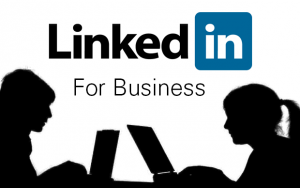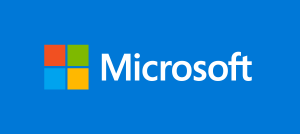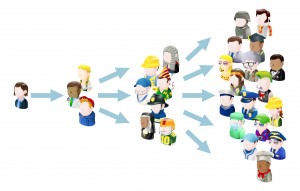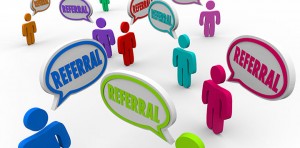It was announced yesterday (13/06.2016) that Microsoft is to purchase LinkedIn, the professional networking website, for $26bn (£18bn), which equates to $196 a share. That’s a lot of money. Apparently the deal will enable Microsoft to boost sales of its business and email software, although to be fair, it doesn’t sound as though they’re failing to do that, does it? What it definitely does do is enable Microsoft to access to the world’s biggest professional social network – because LinkedIn has over 430 million members worldwide who presumably are all gagging to buy up Office 365, Exchange and Outlook.
According to Rory Cellan-Jones, the technology correspondent at the BBC, Satya Nadella is now taking Microsoft in a new direction, and focusing on cloud computing business to provide professional services to clients – including the social network these clients use to connect to each other.
LinkedIn has performed poorly over the past 12 months or so, with profits falling but they been trying to expand their services by offering users more messaging options, mobile apps and a revamped “newsfeed” in order to boost user engagement.
Interestingly, it’s not real money that’s being used for the purchase. Although Microsoft do have cash assets of approximately, $92bn, Microsoft have stated they will pay for LinkedIn ‘mostly by issuing new debt.’ I wish we could all run our businesses by using pretend cash, just as BHS have done, and reports suggest Boots are doing.So my question is – can LinkedIn work for small business?
According to LinkedIn, that’s a big Yes. They claim LinkedIn is perfect for branding, marketing and hiring. Now depending on your small business you may or may not want access to these things.
LinkedIn claim that small businesses can use the website to create a great reputation – and drive new business relationships, while driving word of mouth referrals through marketing. They encourage SME’s to start ‘generating buzz’ with LinkedIn. One of the ways you can do this is to demonstrate that you are an expert in your field and get yourself noticed.
So here at Wholesale Clearance UK, I could write status updates and articles demonstrating how savvy I am when it comes to buying and selling wholesale and B2B generally.
The beauty of LinkedIn really is that it does enable you to connect with other business contacts, where other social media outlets (Facebook/Twitter etc.) might not. Through the connections you make, you may well further business arrangements that are mutually beneficial.
Tips for using LinkedIn
You need to vary your status updates, posts and articles according to exactly which audience you’re trying to reach. If you want partners, that’s a very different style of writing to attracting customers. Make sure you understand your audience.
Get a decent photo up there
People will want to put a face to a name. Again – think about who you are trying to attract. A smarmy business photo of you in a suit may be off-putting. A smiley photo of you with your sleeves rolled up, being active in your business may be better. According to LinkedIn, profile photos receive 14x more profile views than those without.

You – but on a good day? Get a better profile pic up!
Headline news
The first thing people viewing your profile will see, is the headline you have. Speak directly to your target audience – use words and language that will attract them.
Be the expert your audience needs!
Demonstrate your expertise. You can use the Summary and Experience sections of your profile to showcase your skills, career so far, as well as all of your experience. Why are you someone worth knowing? Include keywords that best highlight your skills. You may also then show up in Google search results.
You can increase your brand awareness through boosting your presence in search engine results. To do this you need an understanding of which keywords or phrases you want to rank for and then use them within the copy of your LinkedIn company page. For example, if you’re a wholesale company like we are, you will want to include keywords like, “wholesale clearance”, “eBay stock for sale”, “wholesale lots”. There are tools you can use such as Google Adwords and SEMRush to find out which keywords you want to show up for.
Give examples
If you attend a trade fair, or do something for charity, or win an award, or complete a project, get it written up and showcase exactly what you’re good at. As LinkedIn state, “Nothing shows your quality of work to potential business contacts better than rich, tangible examples.” You can upload blogs, presentations, images, and your website. Give potential clients and customers all the reasons they need to engage with you.
Get the endorsements
Endorse others and get them to do the same for you. Customers and clients love to read reviews, so give them something to chew over. Having personal advocates will give you credibility.
Use your LinkedIn profile
Make sure there are links to your LinkedIn profile on your website and social media. Wherever you are, ensure people can find you easily.
Network
Every connection you make on LinkedIn is on average connected to 110 other professionals? That’s a lot of potential custom. Start by connecting with colleagues, clients, friends, and family. Build out from there. Contacts from previous employment, people you knew at school, college and University are all useful, and you can join a variety of groups and forums on LinkedIn to build new contacts. Connect with anyone and everyone. They may not be useful to you now, but who knows what’s down the road?
Find the experts you need
You can use LinkedIn to outsource services you’re not an expert on. Maybe you need a web designer, a social media expert or a writer. You’ll find lots on LinkedIn. Ask your contacts for recommendations.
Upgrade to Premium?
If you want to you have the option of paying for further LinkedIn services. The premium messaging platform, InMail, allows you to connect with people even if you don’t share a mutual connection. LinkedIn suggest that the response rate for InMail messages is three times higher than email.
Beware the flip side
Some experts suggest that for smaller companies LinkedIn is not such a great idea. If you have limited time and finances, it is far better to opt for a presence on Facebook, Pinterest or Instagram, because if you’re selling – that’s where your consumers are.
You can showcase your expertise more easily in a blog (like this one) and on Twitter. Cross post those blogs, articles etc. to LinkedIn but don’t make it your primary focus. Use it for connections, don’t waste your energy trying to sell.
You are unlikely to be private
Don’t forget that people who pay for LinkedIn have the option to see who has viewed what, so as a small company that can expose you if you’re not careful. Conversely, look and see who is looking at you. It could be your competitors, or it could be a potential customer or client.
Over to you
What’s your experience of LinkedIn? Any use? Have you ever picked up any good leads? Do you sue invisible cash to finance your business? We’d love to hear from you. Leave a comment below or pop into our Facebook page here and have a chat :)
 Wholesale
Wholesale 



Comments are closed.